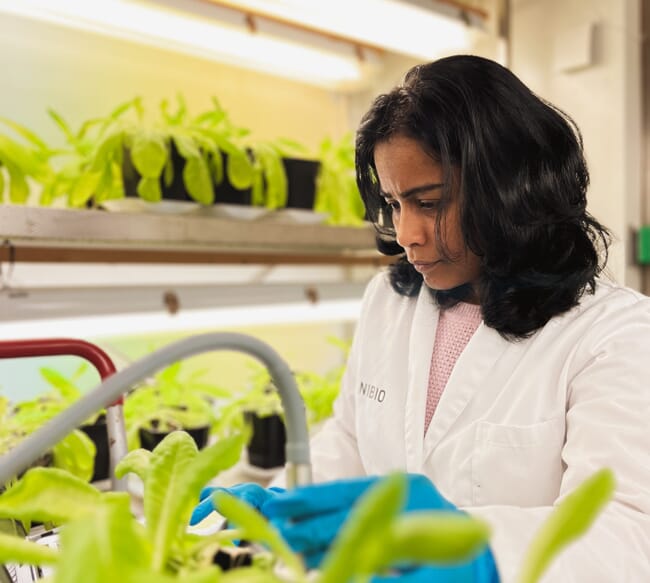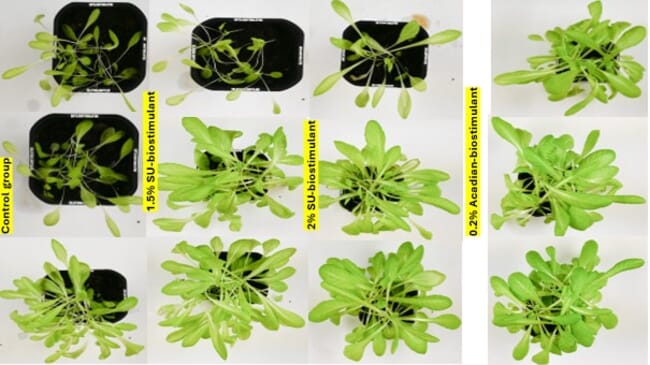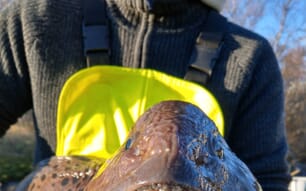
Her work focuses both on food production as well as biomarine resource valorisation © Ava Ocean
Part of the Ocean Green project managed by Ava Ocean, this study aims to turn ecological challenges along the coast into sustainable opportunities. Several other studies within the project have already been conduced, bringing together science, technology and sustainable resource use to restore kelp forests and develop new uses for harvested sea urchins. The overall objective is to tackle urchin barrens and restore kelp forests, by developing restorative fisheries with monetary value for harvested urchins.
By testing the effect of urchin biostimulants, the research helps explore how this underused marine resource can support agriculture while creating value from ecological restoration. This goal is not only to improve yields, but also to limit reliance on synthetic fertilisers, contributing to a more circular economy.
“We’ve been looking at the impact of our urchin biostimulant on lettuce for 67 days now,” said Abirami Ramu Ganesan, a research scientist with NIBIO, in a press release. “We have found a significant increase in biomass production compared to the control – and compared to a seaweed-based extract as well.”
The results indicate that the urchin biostimulant is an effective growth enhancer, in some cases even outperforming an established commercial biostimulant. Such improvements in yield suggests strong potential for scalable and sustainable agricultural applications. This difference can be seen from photos of the lettuce Ganesan has been growing in the Bodø laboratory.

Lettuce seedlings treated with 1.5% and 2% sea urchin biostimulant showed improved growth compared to the commercial control (Acadian 0.2%). Photo taken 40 days after sowing. © Ava Ocean
Addressing food quality and waste
In northern Norway, where access to diverse fresh produce is limited and farmers‘ markets are scarce, researchers are exploring alternative crops that could boost both nutrition and sustainability. Green-leaf lettuce has emerged as a promising option.
“There isn’t always a huge variety available, so green-leaf lettuce is a great choice for us to work on. The range of what we eat needs to be expanded – if only for nutritional reasons,” said Ralf Rautenberger, another research scientist at NIBIO.
Iceberg lettuce, one of the most commonly available vegetables in the region, offers relatively little nutritional value. By contrast, green-leaf varieties are richer in vitamins and could help improve dietary quality in areas with limited access to fresh produce. Beyond greens, the research also highlights broader issues around fertiliser access and the sustainability of marine resources.
“The most important thing is to stabilise the chemical components of the urchin,” said Ganesan. The chemical stability influences how the urchins can be harvested, how they are stored on the vessel and how long they can spend between ocean and lab.
Seafood harvesting meets lettuce
Dagny-Elise Anastassiou, chief impact officer at Ava Ocean and project lead for the Ocean Green project, said the development ties into a wider story. “We have Ava Ocean – a fishing company – trying to play its part in correcting something that our industry helped to break in the first place. But it was not just overfishing that damaged our coastal marine ecosystems. Another culprit is runoffs from the agricultural sector, with fertilisers leading to overgrowth of algae that can have potentially disastrous consequences for local biodiversity.”
By repurposing sea urchins removed during kelp forest restoration, researchers are transforming an ecological challenge into an economic opportunity. Turning these otherwise low-value urchins into fertiliser alternatives supports a zero-waste approach while adding both financial and environmental value to marine restoration efforts.


